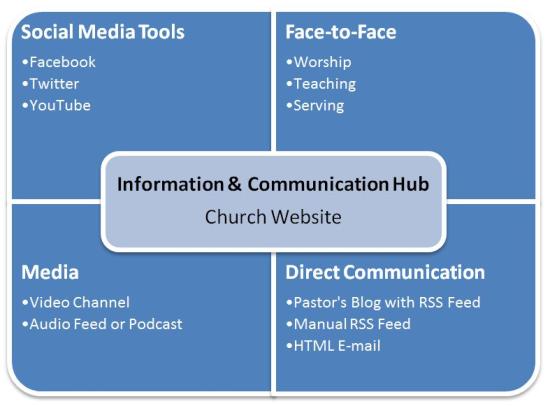Just a few years ago, the biggest issue that faced churches when building a website was determining the primary audience and message. Now, this is only the beginning, as the website has become only one of many online tools used in a communication strategy. Churches routinely use Twitter, Facebook, Blogs and websites along with the face-to-face messages to reach people. While it is great to have so many tools, it does present a problem. The problem with using the various modalities of communication is that it becomes hard for an outsider to get the whole picture of an organization. For example, Twitter can be a great tool, but it is limited to only short bursts of text of 140 characters each. There have been some creative ways that this has been used, but it is virtually impossible to convey a church's identity and message with tweets alone. Sermons and teaching sessions are obviously longer, but it is not practical to go through all of the opportunities for involvement in every occasion. This is where the website comes into the picture. The website can and should be an easy next step for people who find the tweets or hear the sermon.
The website needs to be an "information and communication hub" where people can find all the various ways that they can learn about the church as well as connect with other people who are involved. It can be a starting point, but it can also be more of a point of convergence from all of the tools being used. Blog posts, tweets, status updates and "likes" can all be linked together via the website where the whole message can be shared. For example, a person might read a Facebook update which references a blog post which links back to the church website.
The website also serves as a hub to re-enforce the messages that are delivered in face-to-face situations. Through some strategic planning, the experiences of an event can be enhanced and extended with direct communication, discussion and other online resources. The diagram below shows the interconnected relationship of the various communication mechanisms.

Technology can be a useful tool in churches
if it is properly implemented. I encourage church leaders to reassess their communication methodology and determine the best way to impact people at this point in time.